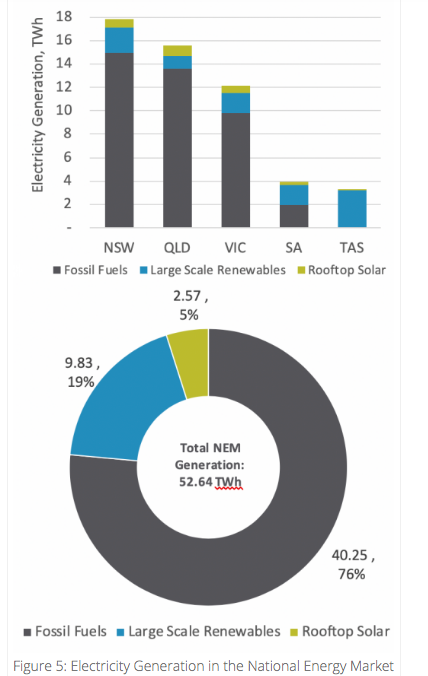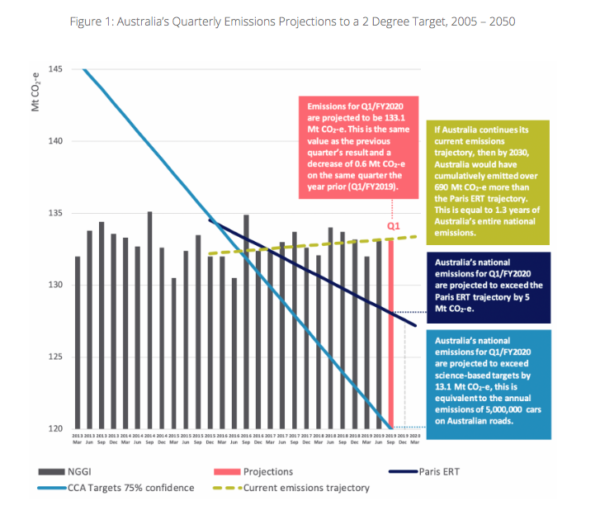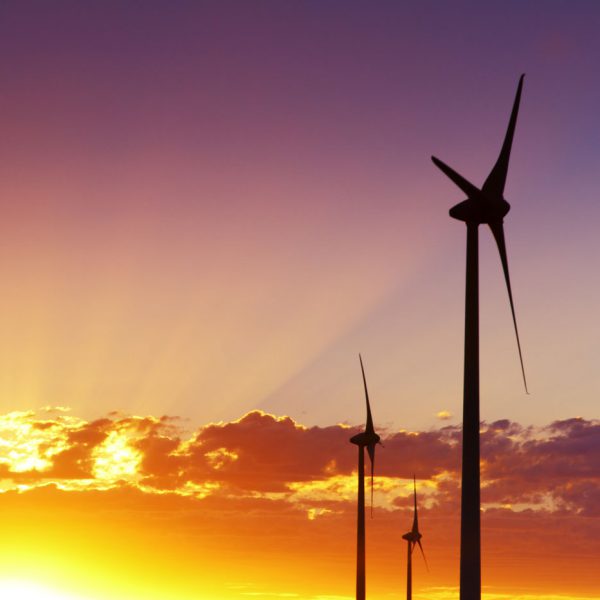Australia has seen the first-ever drop in annual greenhouse gas emissions since 2015 thanks to the record levels of renewable energy penetration in the National Electricity Market (NEM). But the good news is overshadowed by the fact that the current emissions decline rate means the country’s Paris commitments would be met 68 years late.
According to Ndevr Environmental, emissions for the 12-month period to September 2019 edged down by 0.6 Mt CO2-e, or 0.2% compared to this time last year, representing the first decline in yearly pollution since 2015. From July through to September, national greenhouse gas emissions reached 133.1 million tonnes of carbon dioxide equivalent (Mt CO2-e), the same as the previous quarter but a decline of 0.6 Mt CO2-e on the corresponding quarter the year prior (Q1/FY2019), the consultancy finds in its latest Tracking 2 Degrees report.

This achievement can be attributed to renewables, which have had the highest penetration rate on the record for the period, coming in at 24% and representing a 17% increase on 2006 levels. Among the NEM states, renewable energy made up the largest share in Tasmania (99%) and South Australia (51%). All-time high levels of renewable energy generation were recorded in Victoria (24%), New South Wales (16%) and Queensland (13%).
As the clean energy influx coincided with the lowest point for brown coal generation since 2005, totaling 7.8 TWh nationwide, the result was a drop in electricity-related emissions of 0.9 Mt CO2-e nationwide, Ndev finds.
But while electricity emissions for Q1/FY2020 are projected to be the lowest on record (dating back to 2002), both stationary and fugitive emissions are projected to be the highest on record. Namely, the stationary fuel sector alone has offset the carbon savings made in the electricity sector with a 1.2 Mt CO2-e increase.
There are more reasons for concern with investment confidence and new clean energy investment on a downward trajectory. In September the Clean Energy Council published a report showing investment in renewable energy projects had slowed to levels not seen since the prime ministership of Tony Abbott as a result of policy uncertainty and mounting regulatory challenges. According to the report, new clean energy investment slowed significantly in 2019, with average quarterly investment in new generation capacity just over 500 MW compared to over 1600 MW per quarter in 2018, reflecting a reduction of over 60% from 2018 levels.
With the rebadged Abbott-era Climate Solutions Fund, which includes another $2 billion to be used for the Emissions Reduction Fund auctions, as the backbone of its climate policy, the Australian government has legally committed to reducing emissions by 26-28% below 2005 levels by 2030. While the administration has repeatedly claimed that this goal can be met “in a canter”, numerous studies, including the annual UN Environment Emissions Gap Report, showed Australia is among a number of countries that are not on track to reach their 2030 target or which are uncertain to do so based on current projections.
If it continues its current emissions trajectory, Australia would have cumulatively emitted over 690 Mt CO2-e more than the Paris ERT trajectory, which is equal to 1.3 years of Australia’s entire national emissions. In Q1/FY2020 alone, Australia’s national emissions are projected to have exceeded the Paris ETR trajectory by 5 Mt CO2-e and science-based targets by 13,1 Mt CO2-e , which is equivalent to 5,000,000 cars on Australian roads, Ndevr finds.

This content is protected by copyright and may not be reused. If you want to cooperate with us and would like to reuse some of our content, please contact: editors@pv-magazine.com.









By submitting this form you agree to pv magazine using your data for the purposes of publishing your comment.
Your personal data will only be disclosed or otherwise transmitted to third parties for the purposes of spam filtering or if this is necessary for technical maintenance of the website. Any other transfer to third parties will not take place unless this is justified on the basis of applicable data protection regulations or if pv magazine is legally obliged to do so.
You may revoke this consent at any time with effect for the future, in which case your personal data will be deleted immediately. Otherwise, your data will be deleted if pv magazine has processed your request or the purpose of data storage is fulfilled.
Further information on data privacy can be found in our Data Protection Policy.